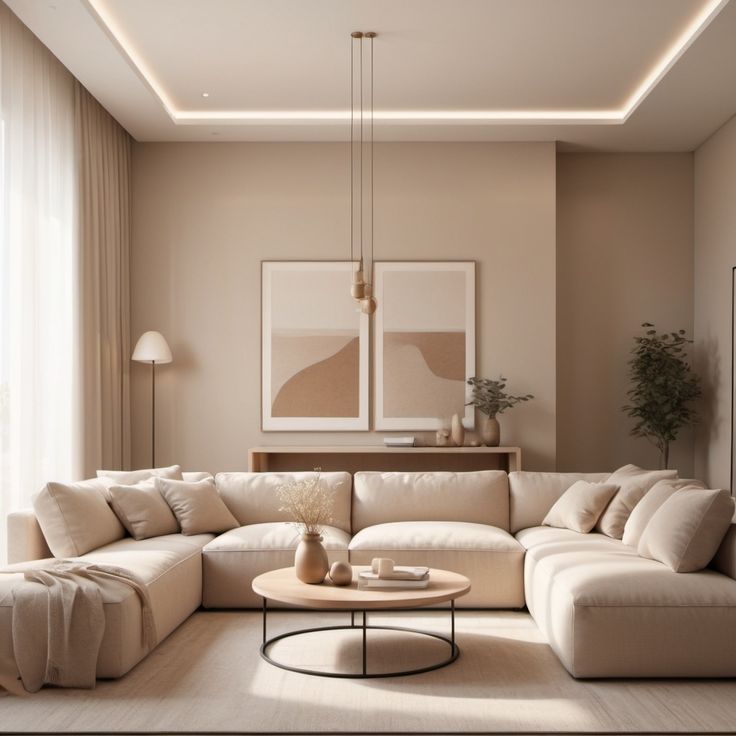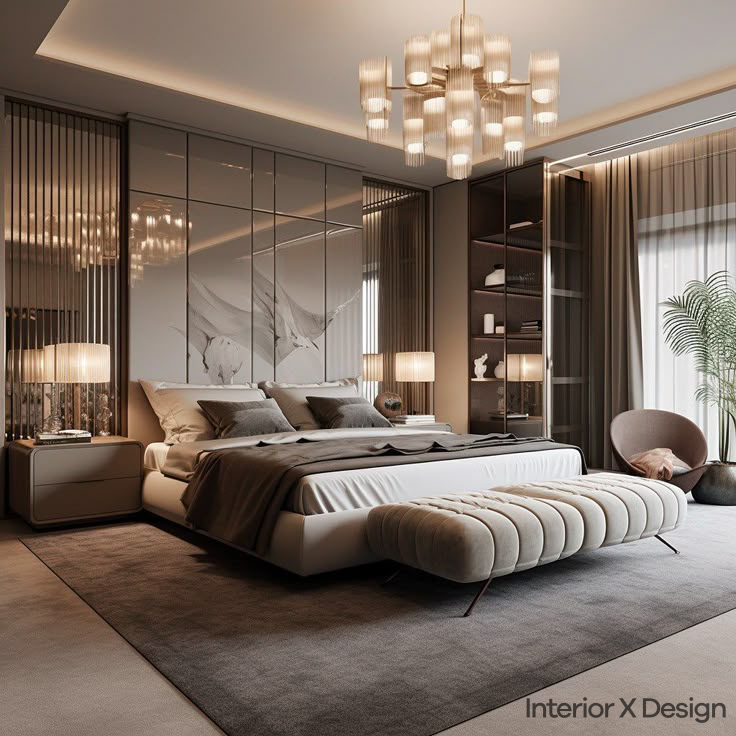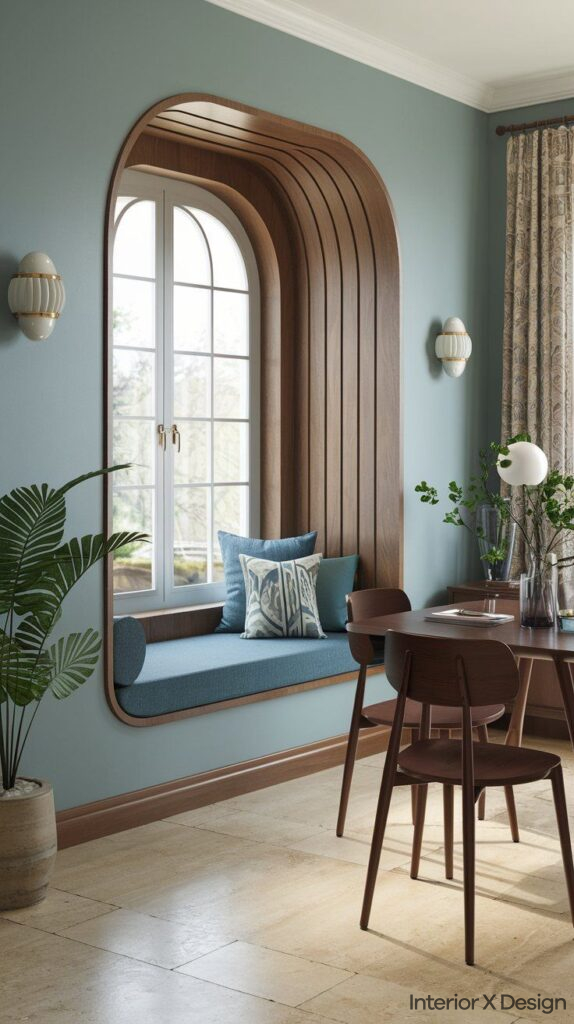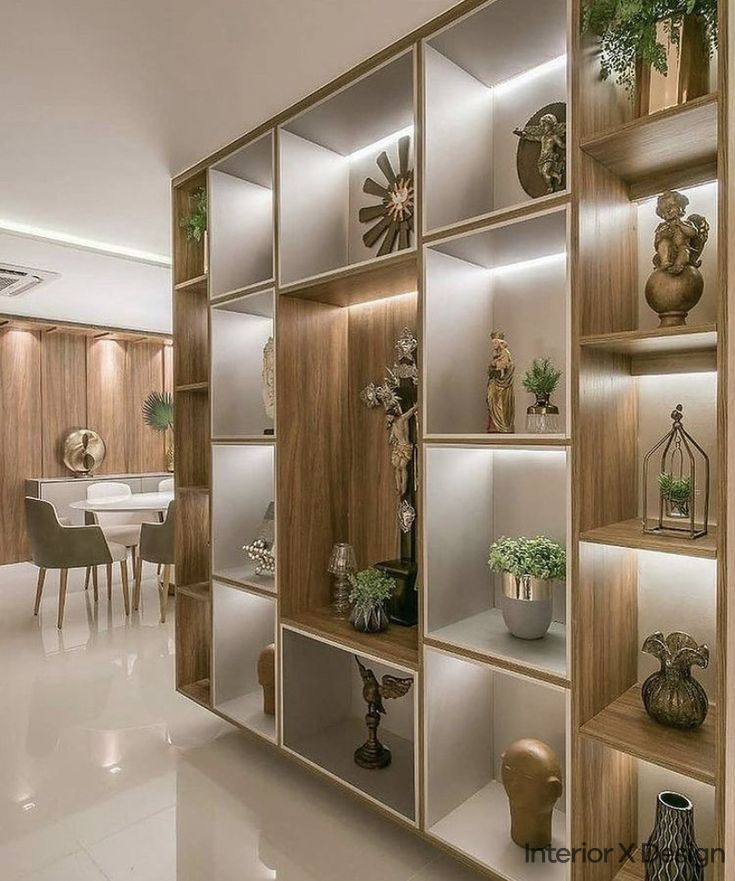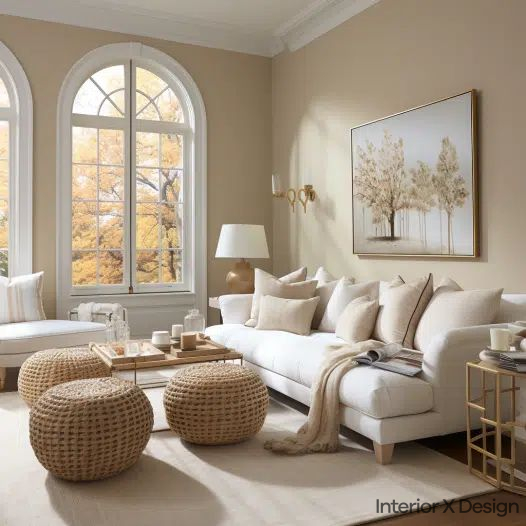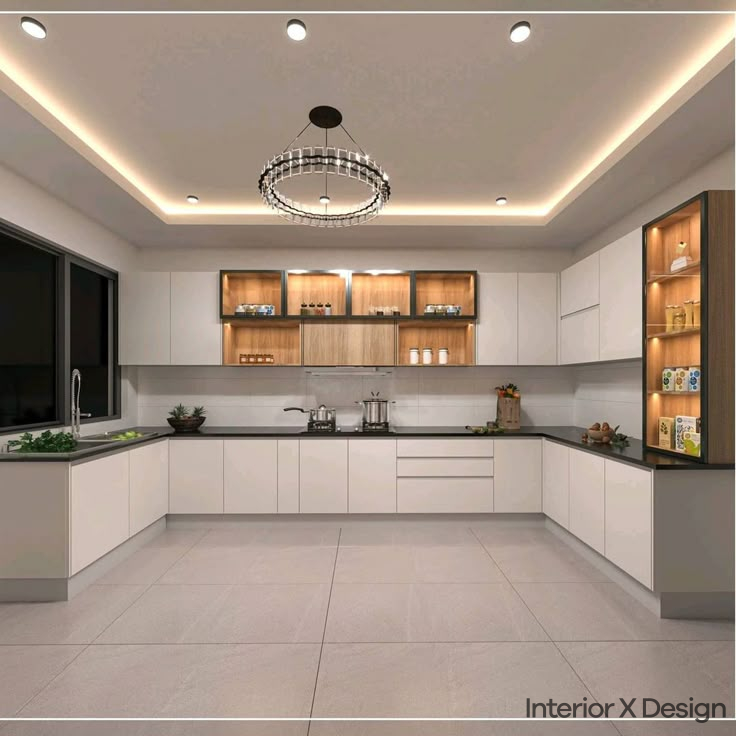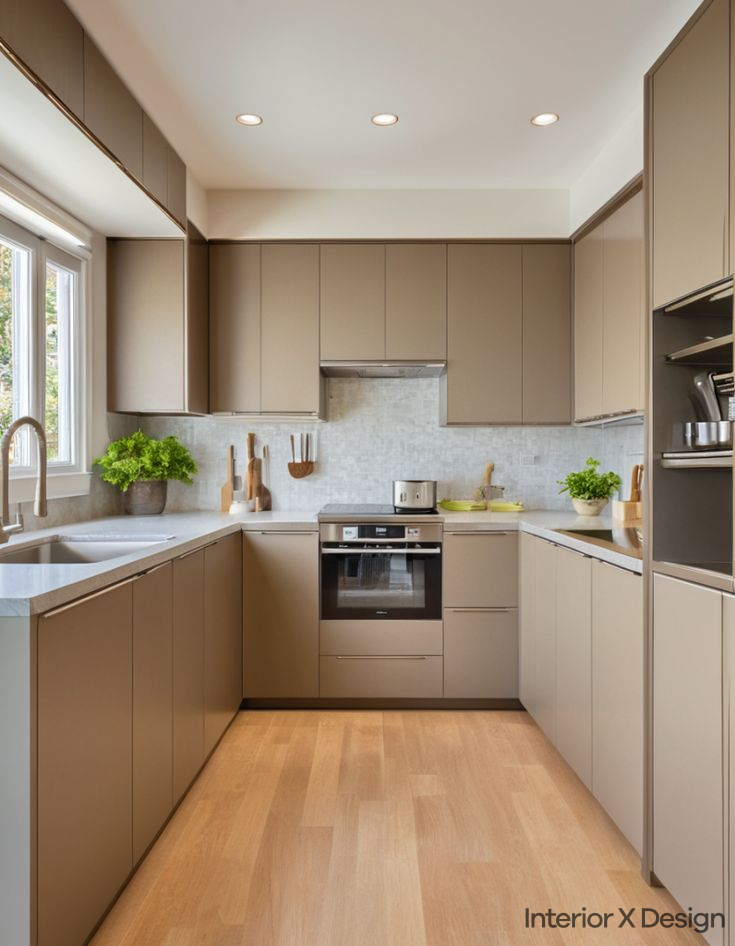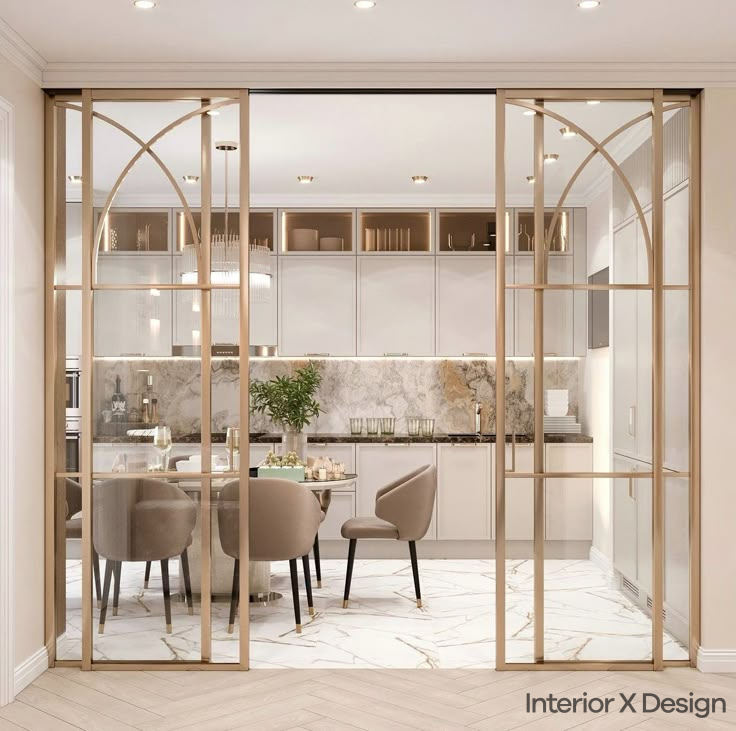1. Subtle Textured Walls for a Minimalist Bedroom
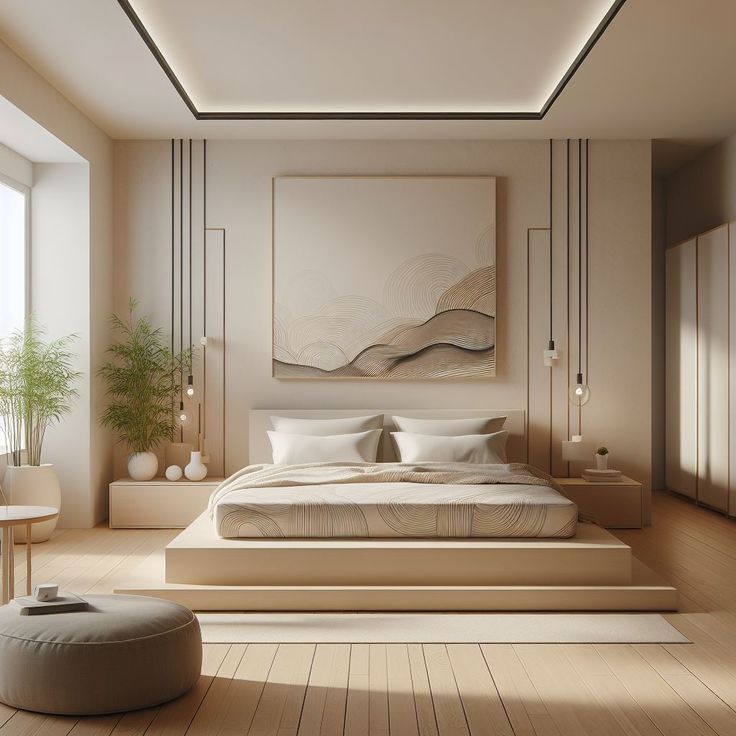
Minimalism is about simplicity and elegance. For a minimalist bedroom, subtle textures add visual interest without overwhelming the space.
Benefits of Simple Wall Textures:
- Creates a clean, uncluttered look
- Adds depth without being overpowering
- Complements a wide range of furniture styles
Examples of Simple Wall Texture Designs:
- Smooth Plaster Finish: A seamless, refined texture ideal for a modern, airy feel.
- Subtle Brushstroke Finish: Light texturing that adds softness without complexity.
- Venetian Plaster: A slightly glossy finish that enhances sophistication.
Pro Tip: Choose neutral tones like off-white, light gray, or beige to keep the space open and serene.
2. Textured Wallpapers for Adding Depth

Textured wallpapers are an easy way to introduce pattern and character without a complete wall makeover.
Types of Textured Wallpaper:
- Embossed Wallpapers: Raised patterns like floral or geometric designs for a tactile feel.
- Fabric-Backed Wallpapers: Velvet, silk, or linen textures that add luxury.
- Stone or Brick Textures: A rustic or industrial effect without the bulk of real materials.
Pro Tip: Light-colored textured wallpaper keeps small bedrooms from feeling cramped.
3. Modern Wall Texture Design with Concrete Finish

Concrete finishes have gained popularity in contemporary bedroom designs. They bring an urban and industrial charm while maintaining a sleek look.
Concrete Wall Texture Ideas:
- Polished Concrete: Smooth, reflective, and elegant.
- Rough Concrete: Natural imperfections add an organic touch.
- Exposed Concrete: Raw, unfinished aesthetics for a bold statement.
Pro Tip: If a real concrete wall is impractical, consider concrete-look wallpapers or wall panels.
4. Bedroom Wall Texture with Panels for a Luxury Feel
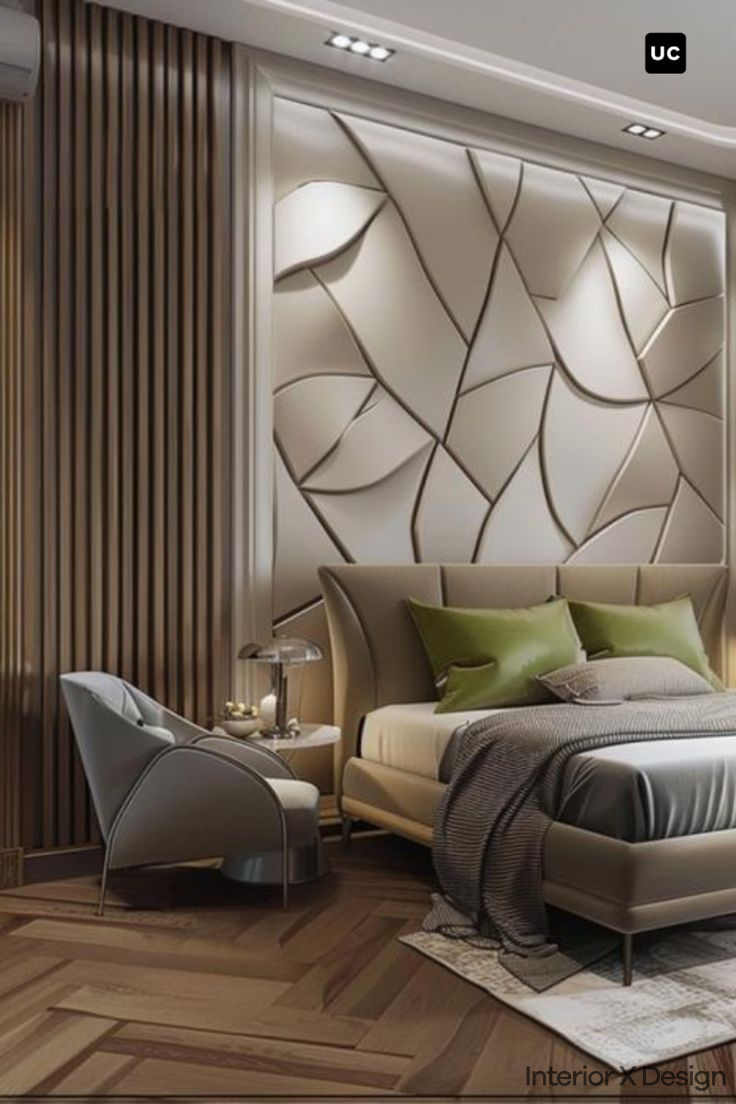
Wall panels offer a structured and sophisticated appearance, making your bedroom feel more refined and high-end.
Types of Textured Panels:
- Wood Panels: Brings warmth and coziness to the space.
- 3D Panels: Creates depth and dynamic visuals.
- Fabric Panels: Enhances soundproofing and adds plush elegance.
Pro Tip: Use panels on an accent wall to maintain balance in small rooms.
5. Natural Material Wall Textures for an Organic Look
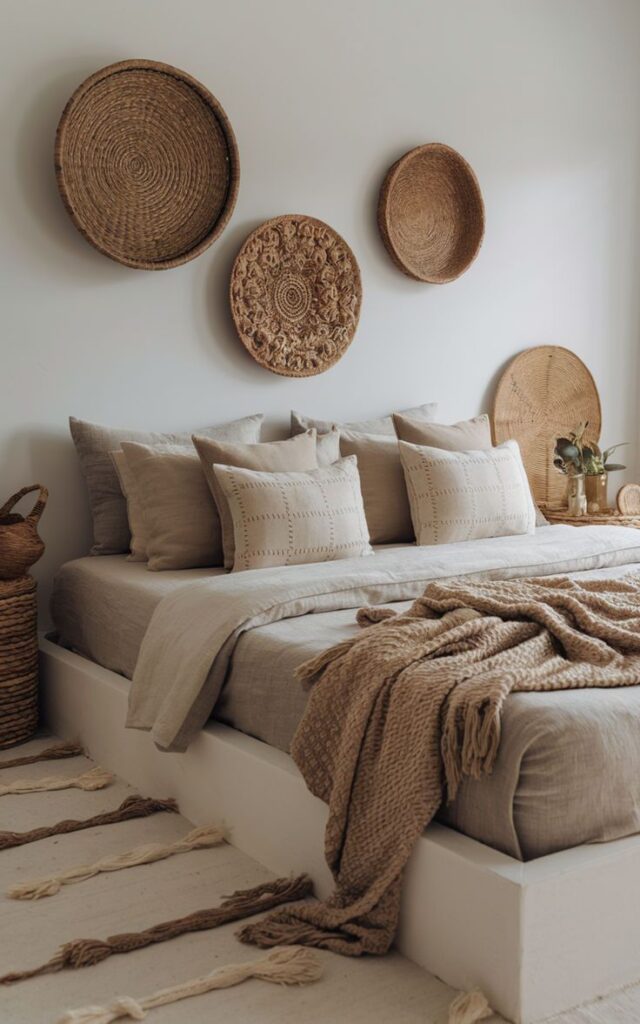
Incorporating natural materials into wall texture design fosters a calming and earthy atmosphere.
Popular Natural Material Wall Textures:
- Wooden Panels: Reclaimed wood or bamboo for a rustic touch.
- Stone Walls: Smooth or rough stone finishes add timeless appeal.
- Clay or Mud Walls: Eco-friendly, sustainable, and rich in texture.
Pro Tip: Pair natural textures with soft textiles like linen curtains and cotton bedding to create a cozy bedroom.
Common Mistakes to Avoid
- Overtexturing: Too many textures in one room can create a chaotic look.
- Ignoring Room Size: Dark and heavy textures can make small rooms feel cramped.
- Skipping Maintenance Considerations: Some textures require more upkeep than others.
Conclusion
Choosing the right bedroom wall texture design can redefine your space. Whether you prefer subtle textures, bold industrial looks, or warm organic materials, the right design choice will enhance your bedroom’s style and comfort. Explore these options and create a space that truly reflects your personality.
Looking for more design ideas for your home? Check out our interior design blog for expert advice and inspiration.






